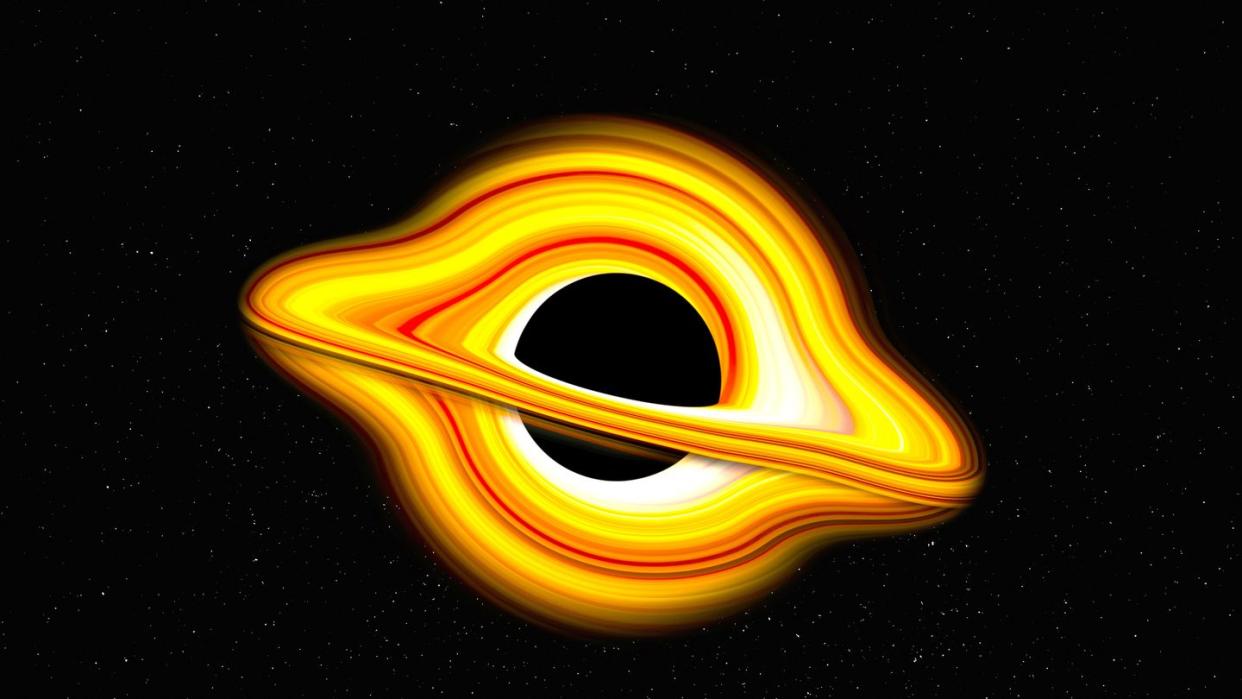After a 20-Year Search, Scientists Found the Middle-Child Black Hole in the Milky Way

"Hearst Magazines and Yahoo may earn commission or revenue on some items through these links."
Most black holes come it two sizes—stellar or supermassive. But a handful of intermediate-mass black holes (IMBH) weighing somewhere in between those two extremes complicate the picture.
A new study using 500 Hubble images spread across 20 years of observation appears to confirm the existence of one of these IMBHs in the Omega Centauri globular cluster.
If confirmed, this IMBH would be one of the best (and closest) examples so far, and could help scientists learn more about the formation and evolution of black holes in general.
When astronomers survey the vast expanse of the cosmos, they primarily stumble across two types of black holes. The first is a stellar-mass black hole—formed from the collapse of a star, these types of black holes usually weigh in at around five to up to 100 times that of the Sun. The second type, and the one our Sun is orbiting at this very moment, is a supermassive black hole. These monsters can reach up to billions of solar masses.
However, astronomers have occasionally spotted a handful of rare black holes that fall somewhere in between these two extremes. As such, they are appropriately name intermediate-mass black holes (IMBH). These “middle-child” black holes could provide valuable information about black hole formation and evolution, but only a few of them have ever been spotted.
Now, an international team of astronomers analyzing over 500 images across 20 years from NASA’s Hubble Space Telescope report that they’ve identified a black hole some 17,700 light-years away in the Omega Centauri globular cluster—a collection of gravitationally-bound stars orbiting the Milky Way. Weighing it at approximately 8,200 stellar masses, this would put the newly discovered black hole squarely in the hallowed IMBH category, and if confirmed, the black hole would be even closer to Earth than the supermassive black hole at our galaxy’s center, Sagittarius A*. The results of this study were published this week in the journal Nature.
“This discovery is the most direct evidence so far of an IMBH in Omega Centauri,” Nadine Neumayer, an astronomer at Germany’s Max Planck Institute and team leader on the study, said in a NASA press statement. “This is exciting because there are only very few other black holes known with a similar mass. The black hole in Omega Centauri may be the best example of an IMBH in our cosmic neighborhood.”
Because black holes are infinite warps of space-time from which even light cannot escape, detecting them at all—let alone from 17,700 light-years away—is incredibly difficult. An astronomer’s best bet is to instead look for the effects of possible black holes by analyzing the behaviors of stars that might be in their vicinities. By closely examining Hubble images of seven rapidly moving stars in this cluster of 10 million stars, astronomers could discern that their movements likely indicated the presence of an intermediate-mass black hole.
“We discovered seven stars that should not be there,” Maximilian Häberle, a Ph. D. student at the Max Planck Institute and lead author on the study, said in the press statement. “They are moving so fast that they would escape the cluster and never come back. The most likely explanation is that a very massive object is gravitationally pulling on these stars and keeping them close to the center. The only object that can be so massive is a black hole, with a mass at least 8,200 times that of our Sun.”
While previous studies have theorized that Omega Centauri could be home to an intermediate-mass black hole, some astronomers suggested that it could be the result of many stellar-mass black holes. However, evidence of stars that exceed escape velocity but appear to remain with the cluster suggests that an IMBH is the most likely conclusion.
If confirmed, this newly discovered IMBH will once again prove that black holes aren’t so black and white, or to put it more specifically, big and small.
You Might Also Like

